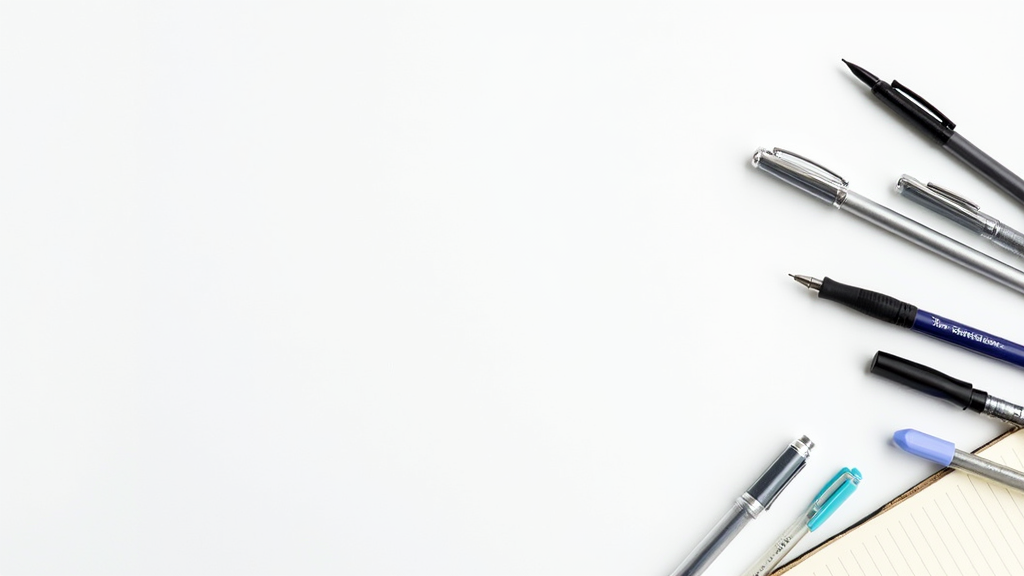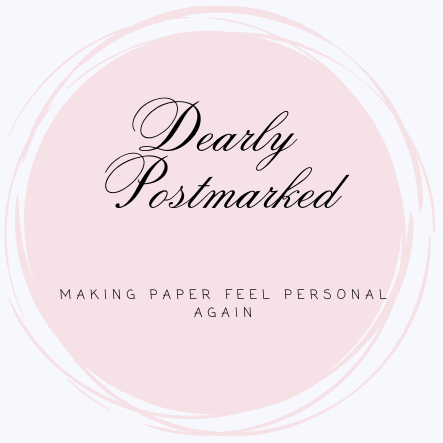Finding the perfect pen isn’t just for writers and artists. Pretty much everyone has their own sense of what feels good in the hand and leaves an easy, clear mark on the page. Pens are everywhere, but not every pen fits every task or style. With so many options out there, I’ve put together a practical guide to help you pick a pen that feels right, works the way you want, and fits your personal vibe. Whether you’re scribbling notes, sketching, or signing documents at work, the right pen can really make a difference.

Heads up! This post may contain Amazon affiliate links. That means if you click and make a purchase, I may earn a small commission—at no extra cost to you. I only recommend products I truly love or think you’ll find useful.
Why Picking the Right Pen Actually Matters
It’s easy to overlook, but using a pen that matches your needs can make a huge difference. Some people just want a cost-effective workhorse for jotting things down, while others care about their handwriting or want something that glides smoothly for long journal sessions. The pen industry has grown fast; there are all kinds of specialty options now, from super smooth gel pens to ecofriendly bamboo models. Learning about these options gives you more control over your routine and can even make writing or doodling, way more enjoyable.
Pens have a history, too. In the past, people dealt with messy quills and inkpots. Then the ballpoint pen arrived in the 20th century and changed everything. Since then, new kinds of ink, improved ergonomic designs, and refillable options have been put out there. Knowing about these choices means you’re not just grabbing the nearest pen but picking one for a specific purpose or feel.
Getting to Know Your Pen Options
Pens are definitely not all the same! Every type has its own set of benefits. Here are the basics you’ll find on store shelves:
- Ballpoint Pens: Super common and cost friendly, ballpoints use oil-based ink that dries quickly. They’re great for quick notes or filling out forms. The downside? They can feel stiff on cheap paper.
- Gel Pens: These use water-based inks with rich colors, making lines bold and smooth. They’re perfect for planners or when you want your writing to stand out. Just be careful—gel ink can smudge if you write too fast.
- Rollerball Pens: A blend between gel and ballpoint pens, rollerballs use water-based liquid ink. Writing feels smooth with very little pressure. These are great if you do lots of notetaking or letter writing.
- Fountain Pens: A favorite if you love handwriting, fountain pens use water-based ink and can be refilled. They offer a special, customizable feel, but need a little extra care and a small learning curve.
- Fine Liners and Felt Tip Pens: These make crisp, precise lines and are great for both drawing and writing. They run out faster than ballpoints but are ideal for lists or anything that needs extra clarity.
Knowing how each pen type performs helps if you want something specific, like a tool for art projects, signatures, or everyday office use.
Quick Checklist for Picking Your Perfect Pen
It can get overwhelming with all the choices, so I start with a few simple questions:
- How do you plan to use it? Quick sticky notes? Long journal entries? Sketching?
- Do you have a strong grip or write for long periods? Look for a pen with a comfortable, ergonomic design that’s easy on your hand.
- What kind of paper do you use? Some pens bleed through thin notebook paper, while others are better for almost any paper type.
- Are color or vibrancy important? For planners, color coding, or art, you’ll want gel pens or fine liners that come in lots of shades.
- Do you lose pens often, or want something that lasts? Disposable pens are cheap, but high quality or refillable pens are better for the environment and usually more satisfying to use.
Thinking about these details makes it easier to skip the pens that won’t work for you and find ones you’ll enjoy using every day.
Things Worth Thinking About Before You Buy
After testing dozens of pens, there are a few things I always pay attention to. Here’s what’s on my checklist:
- Grip Comfort: Some pens have soft rubber grips or unique barrel shapes. If your hand cramps, that pen’s not a good fit.
- Ink Consistency: Cheap pens can skip or leave blots. If you can, test pens in-store, or read through some reviews for thoughts on quality.
- Dry Time and Smudging: Left-handed writers often deal with smudging, especially with gels and rollerballs. Check if the ink dries quickly.
- Ink Refills and Waste: Refillable pens or those with cartridge refills cut down on plastic waste and save money in the long run.
- Price Range: High-end pens feel like luxury accessories, but most good everyday pens are affordable. Figure out what you’re comfortable spending.
Grip Comfort
When you write for long stretches, a good grip means everything. Slippery or awkward pens can ruin the experience, even with the best ink. I always look for pens with rubberized or contoured grips, which make marathons of meeting notes or journaling so much more comfortable.
Ink Consistency
Scratchy or skipping pens are a dealbreaker. If reviews mention skips or blotchy lines, I skip that brand. Reliable ink flow means no constant retracing or blots to clean up.
Dry Time and Smudging
For lefties or fast writers, watching ink smear is a real pain. Pens with fast drying ink are much better at preventing messes on the page and on your hands.
Ink Refills and Waste
Single use pens create lots of plastic waste. Refillable pens are a simple way to cut that down. A reliable refillable pen also saves money and feels more personal—you just swap the ink when it runs out and you’re good to go.
Price Range
Plenty of great pens are just a couple bucks, especially in bigger packs. But investing in a trusty refillable pen can be a real upgrade, especially if you like having a special “go to” pen for important notes or signatures.
It’s a good idea to try different pen types in person if you can. Stores sometimes have samples, and sample packs online can help too. Your hand shape, writing style, and daily tasks all affect what works for you.
Tips and Tricks for Getting More out of Your Pens
Once you find pens you love, a few habits can make your writing smoother and help your pens last longer:
- Store pens tip-down (for gel and rollerball): This helps ink flow better and keeps tips from drying up.
- Write gently: Most quality pens don’t need hard pressure. Gentle strokes prevent blots and reduce finger fatigue.
- Keep spare refills handy: If you’re out and about, carrying a backup refill avoids mid-meeting disasters.
- Use the right paper: If your pen bleeds or feathers, slightly thicker or smoother paper helps. Some notebooks are designed for fountain pens and make a noticeable difference.
- Try different tip sizes: Many pens come in varied tips—finer for precise notes, bold for big titles or sketches. Having a few sizes on hand gives you options.
The Basics: Beginner Friendly Pen Picks
If you’re new to exploring pens or just want no-fuss reliability, these are some of my favorites.
- Ballpoint multipacks: Inexpensive, easy to find, and reliable for general note-taking or communal workspaces.
- Smooth gel pens: Lots of color options, smooth ink, and comfortable for everyday notes or planner decorating.
- Affordable fountain pens: If you’re curious about cursive or calligraphy, try a budget fountain pen with extra cartridges.
- Fine Liners: Good if you want sharp to-do lists or fine sketches.
I keep several in my drawer since every project needs something a bit unique.
Frequently Asked Questions
Here are answers to some of the things I get asked most by pen fans:
Question: What’s the best pen for writing in notebooks without bleed-through?
Answer: Ballpoint pens and most micro-tip gel pens work well on thinner notebook paper. Fountain pens may bleed unless you use thicker or higher-quality paper.
Question: How do I keep my pen from skipping?
Answer: Always cap your pen when you’re not using it, and store gel or rollerball pens tip-down. If you keep running into problems, it might be time to switch to a better brand.
Question: Are refillable pens really worth it?
Answer: For people who write a lot, they absolutely are. They’re better for the environment and usually write more smoothly and reliably than most throwaway pens.
Bottom Line
Picking a pen isn’t just a minor office supply decision. It’s about comfort, matching your writing style, and getting the most from each writing session. By testing a few different types and thinking about what you need, it’s easier to find pens you love using. When you settle on the right ones, both your hand and your daily notes will thank you. Read my previous blog post about fountain pens.
You Might Also Like …
Top 10 Pens for National Pen Day
